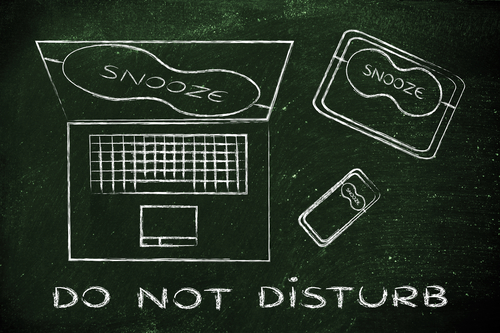Addicted to Email?
For many of us, we just returned from spring break – the amazing break from the routine of morning alarms, making lunches and shoving kids out the door each day. It’s a chance for us to hang out with our families and do something out of the normal routine.
Our family took a trip to Asheville, NC to see the sites and explore the hub of this happening city. The concept of vacation is to walk away, to refocus and unwind from the stress of the everyday grind of home and work. Let’s explore what keeps us from being able to do this and talk about what we can do to enjoy the full benefits of our time away.
For me, what I noted this vacation, more than ever, was the difficult draw to hop on my phone and check emails or social media so I could monitor work. The urge to check was as obsessive as Gollum’s love of his ring, Precious, in Lord of the Rings. It was undeniable, palatable and obsessive.
You’ll be proud to know I dug in to my inner Frodo and resisted the urge and even sought to destroy the urge to check email throughout the week, but that doesn’t help us understand why this urge exists for so many of us.
Why do we find social/technology messaging so addictive? I think there’s an evolution to the process. Let’s explore the process in the form of email.
- Email starts as a practical need for many of us, so it’s logical to want to check email. Many folks report they do so because they believe their company expects them to. Others say they do so to manage the influx and workflow when they return.
- On a side note, according to an American Psychological Association report, “Stress in America™” study, people who check their email on their days off report greater stress than those who don’t.
- The ping of our email and social media outlets actually produce dopamine (i.e. happiness hormone – to learn more about how this works, check out this intriguing article, by The Guardian, which talks about the world of tech and how dopamine work in tandem).
- From there, email then morphs into the tangible outcome of our importance and significance.
Let’s dig into each of these just a little more and start with the practical need for email. As a business owner, who for a very long time, was the only employee, not answering an email may have resulted in not getting a potential piece of work, so early on I would check email to make sure my client’s needs were met. That’s the practical need, and that’s where it starts.
Based on the business results and the dopamine rush we get from the technology services in our lives, it’s natural for many of us to develop addiction-like reactions to our email, text messages and social media. This past week revealed how strong that urge and connection has become in my own life. The struggle to not check all my connection outlets impacted each day of our vacation.
For me, and perhaps for you, the practical need, driven by the physical rewards of technology, then combine to take us to our last step in the process, the replacement of need and practicality with what we think our social presences signifies – a symbol of our importance and significance to other people.
It’s the transformation between need and significance results in thoughts of: “I’m so important and needed by other people, I couldn’t possibly go without checking my emails or statuses. People are relying on me. People need me. People want me and can’t survive a week without me.”
Maybe it seems a harsh conclusion, but I don’t think it is. Google social media and endorphin addiction, and you’ll find people associate value and worth with the ping of social messaging. For many of us, years of dopamine rushes have carved neurological super highways in our brain that link that ping to our importance and significance – both of which are natural, human desires linked to meaning in life.
It’s not wrong to desire importance and significance. That’s not what this is about. This is about giving ourselves permission to go on vacation, to unplug and to truly be present in a different time and space so you can return refreshed and ready to take on the next phase of your busy lives when we have experienced counter-forces in our lives that have lead us to false importance and significance provided by social and technological channels.
All of this discussion begs the question, what can we do to truly unplug, given the physiological and emotional connection we have to our social/technological draw?
- Resist, resist, resist. For me, it required putting my phone in another room or in an inaccessible location during our family time. You may have to do something similar.
- Keep things in perspective. I get these kids of mine for 4-6 more years. Do I want them thinking about how much I logged on every time we were together, or do I want them remembering us laughing over a game or movie together? I get to choose my role in their memories and know I want them to remember a mom who engaged in their lives.
- Limit the power of this addictive behavior by setting parameters daily, so when vacation comes, your dopamine rewards aren’t as strongly linked to technology. If I use social media responsibly every day, and set times regular times and limits, I’m less likely to feel the full dopamine effects associated with the immediate urgency of those technology pings.
Life with technology is rewarding and challenging. As a culture we need to talk about both sides of technology realistically. Your challenge for the week is to set one limitation on the channels that produce the most dopamine for you, maybe that includes reading the magazines in the doctor’s office instead of pulling out your phone.
Whatever you parameter you choose, I wish you all the best as we struggle to give ourselves permission to unplug!
Keynote speaker, trainer, and consultant, Sarah Gibson, helps organizations leverage the power of communication, teamwork and diversity to improve engagement and transform teams. To buy her book or inquire about her speaking programs, please visit www.sarahjgibson.com.



